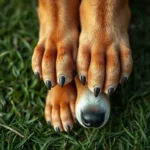
Walking your puppy can feel like an adventure filled with joy, excitement, and, inevitably, a bit of chaos. You might find yourself in a familiar scene: your puppy lunging toward a mysterious object on the ground, mouth open wide, ready to sample whatever catches their eye. Puppy eats everything on walks is a common scenario many dog owners face, and while it can be amusing, it also raises a few red flags. Understanding this behavior is crucial for any responsible pet owner, as it can pose serious health risks and complicate training.
Understanding Puppy Behavior
Natural Instincts
Puppies are naturally curious creatures, and much of their exploration happens through their mouths. Just like human babies, puppies tend to taste everything as a way to learn about their environment. This instinctual behavior is known as scavenging, a survival tactic inherited from their wild ancestors. In the wild, dogs would forage for food, which often included a variety of non-food items. This instinct can lead to your puppy munching on anything from sticks to discarded food wrappers during walks.
The Role of Curiosity
Curiosity is a significant driver behind a puppy’s desire to taste everything. Puppies are often unaware of what is safe and what is harmful, leading them to try and eat items that pique their interest. Common items they might encounter include:
- Leaves and grass
- Sticks and stones
- Food scraps or litter
- Animal droppings
Each new smell or sight can spark their inquisitiveness, prompting them to investigate further by sampling it.
Impact of Breed and Age
Certain breeds may be more prone to this scavenging behavior than others. For example, retrievers and hounds are known for their keen sense of smell and natural instinct to explore. Additionally, a puppy’s age plays a pivotal role. Younger puppies are more likely to engage in this behavior as they are still learning about their surroundings. As they mature and receive proper training, this tendency often decreases.
Common Risks and Dangers
Health Risks
While it may seem harmless for your puppy to explore different items, many hazards can arise from eating non-food objects. Some potential health risks include:
- Choking: Small objects can easily become lodged in a puppy’s throat, posing a choking hazard.
- Poisoning: Many common items found outdoors can be toxic to dogs. For example, chocolate, certain plants (like foxglove and oleander), and even some human foods can lead to severe health issues.
- Digestive Blockages: Ingesting larger items like sticks or toys can cause blockages in the digestive system, necessitating surgical intervention.
Behavioral Consequences
The habit of eating everything on walks can also lead to more significant behavioral issues. This behavior can divert attention away from training and create additional challenges in building a strong owner-pet relationship. If your puppy is constantly distracted by the need to eat random objects, it can impede their ability to focus on commands and training.
Legal and Environmental Concerns
Another aspect to consider is the legal and environmental implications. Puppies that consume litter or waste can contribute to a dirty environment, and as responsible pet owners, it’s vital to maintain public spaces. Moreover, consuming other animals’ waste can expose your puppy to parasites and diseases.
Preventative Measures
Training Techniques
Training your puppy to refrain from eating everything on walks is essential. Here are some effective training techniques:
-
Positive Reinforcement: Always reward desired behaviors. When your puppy walks past something without attempting to eat it, provide praise or a treat. This encourages them to repeat the behavior.
-
Leave It Command: Teaching the “leave it” command can significantly help. Here’s a simple way to do it:
- Hold a treat in your hand and let your puppy sniff it.
- Close your hand and say “leave it.”
- When they back away, reward them with a different treat from your other hand.
- Practice until they understand the command.
Equipment and Tools
Using the right equipment can also help manage your puppy’s eating habits. Consider the following:
-
Leashes and Harnesses: A sturdy leash and harness can provide better control during walks, reducing the likelihood of your puppy lunging for objects.
-
Muzzles: In extreme cases, using a muzzle can prevent your puppy from eating non-food items while still allowing them to breathe and drink water. Ensure that it fits properly and is comfortable for your puppy.
-
Training Aids: Clickers and treat pouches can enhance your training sessions, allowing for immediate feedback and rewards when your puppy exhibits good behavior.
Environmental Management
Being proactive about your walking environment can reduce the chances of your puppy eating unwanted items. Here are some tips:
-
Safe Walking Routes: Choose paths that are clean and less populated. Avoid areas with heavy litter or potential hazards.
-
Stay Alert: Always be aware of your surroundings. Keeping an eye on your puppy can help you anticipate and prevent them from eating something harmful.
Alternatives to Eating Everything
Providing Appropriate Chew Items
To curb the urge to munch on random objects, offer your puppy appropriate chew toys. These can satisfy their natural chewing instincts while ensuring their safety. Look for durable toys that can withstand heavy chewing, and consider rotating them to keep your puppy engaged.
Engaging in Play
Interactive play can be an excellent distraction from unwanted eating behavior. Engage your puppy in games like fetch or tug-of-war, which can provide mental and physical stimulation. This not only diverts their attention but also strengthens your bond.
Structured Walks
Structuring your walks can also minimize scavenging. Here are some tips:
-
Pace and Duration: Maintain a steady pace that allows your puppy to explore but doesn’t give them too much time to snack on the ground.
-
Incorporate Training: Utilize walks as training sessions. Practice commands like “heel” or “sit” to keep your puppy focused and engaged.
When to Seek Professional Help
Recognizing Extreme Cases
While many puppies exhibit scavenging behavior, it’s essential to recognize when it becomes excessive. If your puppy obsessively seeks out items to eat or shows signs of distress when unable to do so, it may be time to seek professional help. Signs that warrant attention include:
- Frequent vomiting or digestive issues
- Inability to focus on commands
- Extreme anxiety when out for walks
Behavioral Training Resources
Consulting a veterinarian or a professional dog trainer can provide valuable resources for managing your puppy’s behavior. They can recommend specific training programs tailored to your puppy’s needs and help you develop effective strategies.
Conclusion
Addressing the behavior of puppies eating everything on walks is crucial for both their health and your peace of mind. By understanding their instincts and implementing effective training techniques, you can create a safer environment for your furry friend. Remember, patience and consistency are key to changing this behavior, so don’t hesitate to seek professional help if needed. Your puppy’s well-being and your walking experience will improve dramatically with the right strategies in place.









